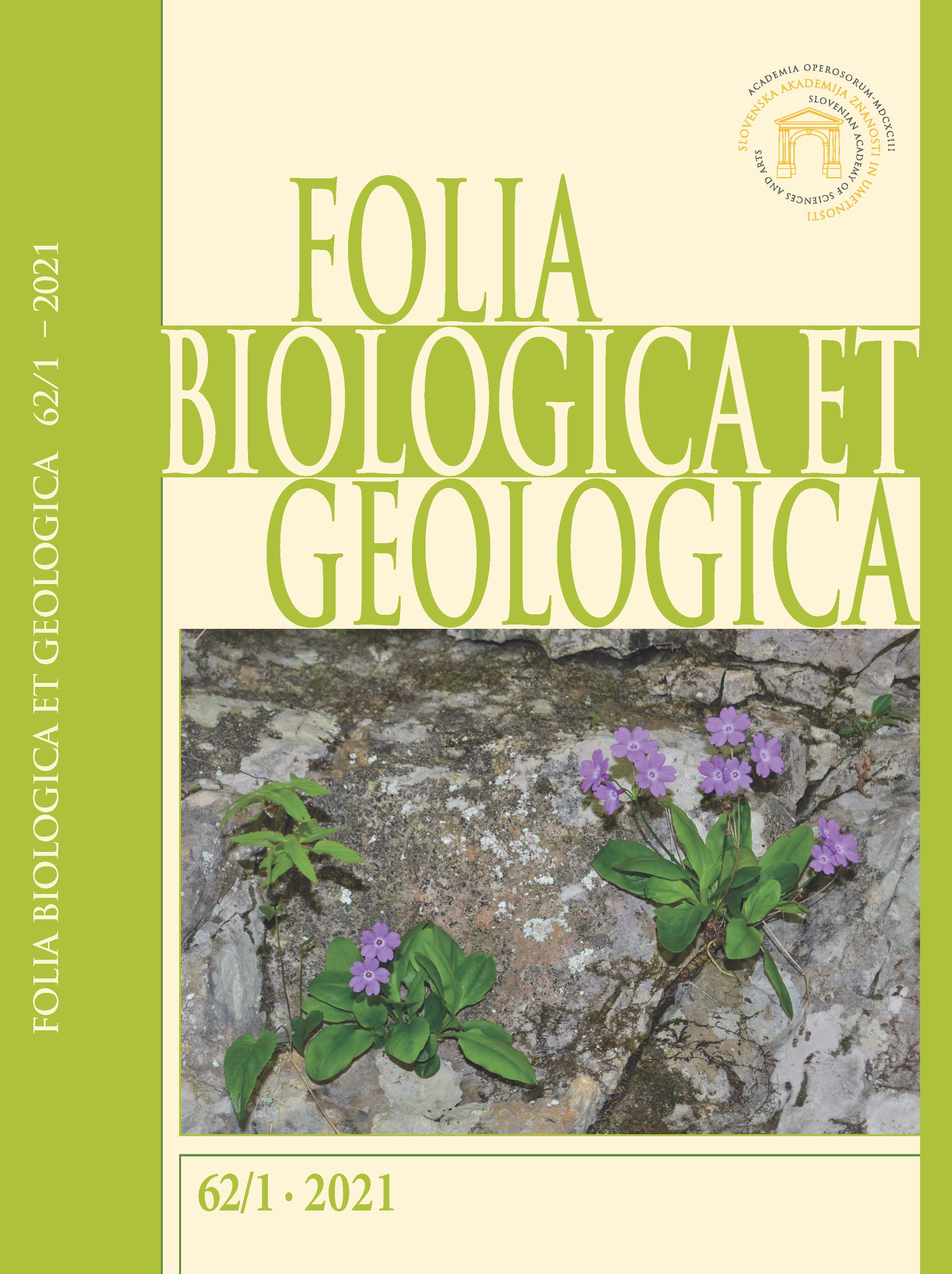Phytosociological analysis of Gladiolus palustris sites in northwestern, western and southwestern Slovenia / Fitocenološka oznaka rastišč vrste Gladiolus palustris v severozahodni, zahodni in jugozahodni Sloveniji
DOI:
https://doi.org/10.3986/fbg0082Abstract
With a phytosociological analysis of more than 200 relevés on more than 25 localities with Gladiolus palustrisand (or) G. illyricusin western and southwestern Slovenia we identified more than 15 communities of association rank that belong to at least eight vegetation alliances and five classes. We determined that these two species can grow on the same localities and sites, but Gladiolus palustrisflowers at least 14 days after G. illyricus. Another reliable distinguishing characteristic is the fibrous tunic covering the corm. Gladiolus palustris is threatened in most of the examined localities, except for the Banjšice Plateau and the Slavnik range in Čičarija, but the current nature conservation policy in Slovenia does not provide for its preservation.
Key words: Gladiolus palustris, G. illyricus, phytosociology, syntaxonomy, Natura 2000, nature conservation, Slovenia
Izvleček
S fitocenološko analizo več kot 200 popisov na več kot 25 nahajališčih v zahodni in jugozahodni Sloveniji, na katerih uspevata vrsti Gladiolus palustrisin (ali) G. illyricus, smo prepoznali več kot 15 združb na rangu asociacije, ki pripadajo vsaj osmim vegetacijskim zvezam in petim razredom. Ugotovili smo, da obe podobni vrsti lahko uspevata na skupnih nahajališčih in rastiščih, toda vrsta Gladiolus palustriscveti vsaj 14 dni kasneje kot vrsta Gladiolus illyricus. Zanesljiv znak za njuno razlikovanje so vlakna, ki obdajajo njun gomolj. Na večini preučenih nahajališč je močvirski meček ogrožen in mu zdajšnja naravovarstvena politika v Sloveniji ne zagotavlja ohranitve, izjema sta planoti Banjšice in pogorje Slavnika v Čičariji.
Ključne besede: Gladiolus palustris, G. illyricus, fitocenologija, sintaksonomija, Natura 2000, varstvo narave, Slovenija




